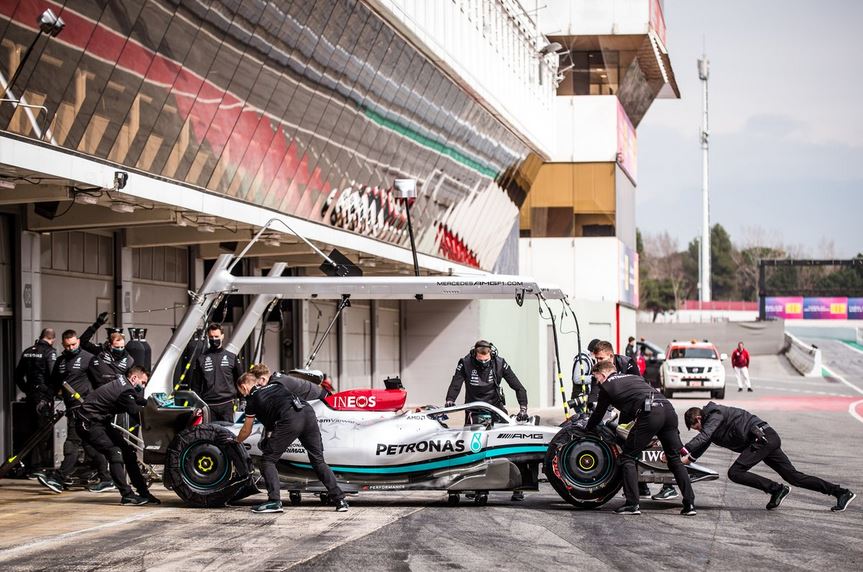Mercedes had initial alarm regarding porpoising problem at Barcelona in 2022 Formula 1 pre-season test. However, it could not anticipate the gravity of the W13 issue at hand.
Andrew Shovlin, Mercedes trackside engineering Director, revealed that the issue was identified two weeks earlier at Storm Eunice. Later, similar issue followed throughout the Barcelona test. Nonetheless, the team did not concern itself with the W13 issue. Because the car had yet to be run in its race specification.
The specification arrived at the Bahrain ahead of season opener. The floor of the car was kept same after legal confirmation by the FIA.
However, Mercedes 2022 campaign remained affected by the porpoising issue, which got worse with the season. The team could not control the issue until it introduced its first major upgrade at Spanish GP in May.
Later, the team had diagnosed an issue with suspension stiffness over bumps. The major upgrade had settled the porpoising issue.
Shovlin on Mercedes struggles
Mercedes could not managed to improve the Silver Arrows (W13) until later in the Austin Grand Prix.
“At Silverstone [for the shakedown], we were in the middle of a storm – it was about the worst conditions we’ve ever run a car in,” Shovlin
“That certainly doesn’t allow for very clear and sensible shakedown running for the filming day.
Read More: Mercedes can avoid F1’s decline spiral
“But that car – so the car that we then took to Barcelona – yes, you could get porpoising and we were running the car very high anyway on ride heights given the weather and given that it was the first running of the car.
“We did lower the ride heights to more normal levels at Silverstone and saw that you could get this phenomenon. But, we didn’t really know much about it and what was causing it.
“So, going to Barcelona was therefore a case of understanding: ‘How can we run the car? What are the problems? How can you mitigate what was happening with the porpoising?’
“At the time about the best thing you could do was just lift the car off the ground, give up performance and manage it that way.
“That car was defined much, much earlier in the development programme than the race one package.
“But the issue… at the time in Barcelona, we thought: ‘We’re not the quickest, but we don’t think we we’re in a bad place’.
“Because we were expecting to add good performance with that Bahrain package.
“The issue was that when we fitted it, the porpoising was a whole other level.
“Most of the performance that we intended to add didn’t materialise because we had to lift the car even further and at that point you couldn’t get rid of the bouncing.”
















